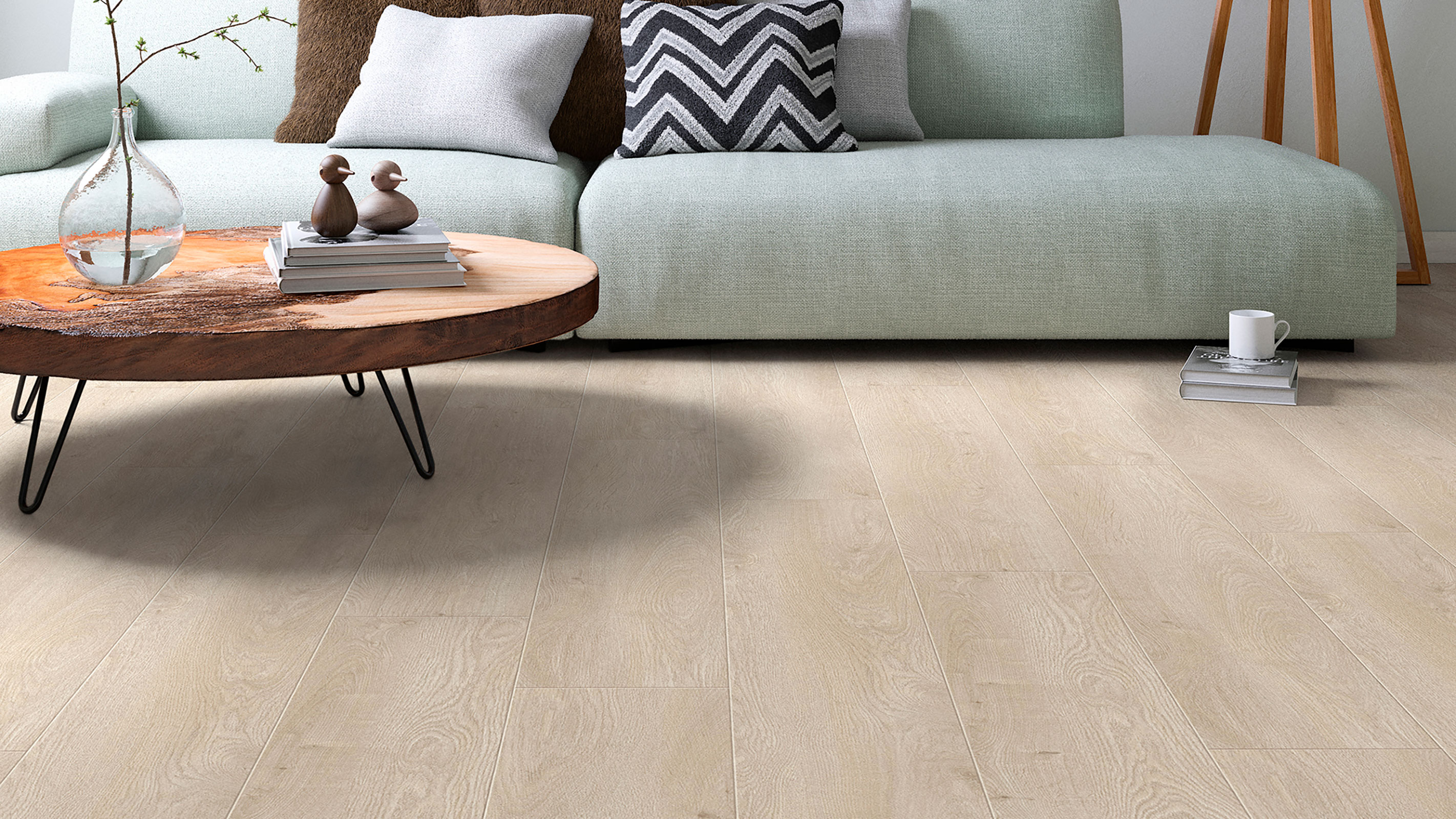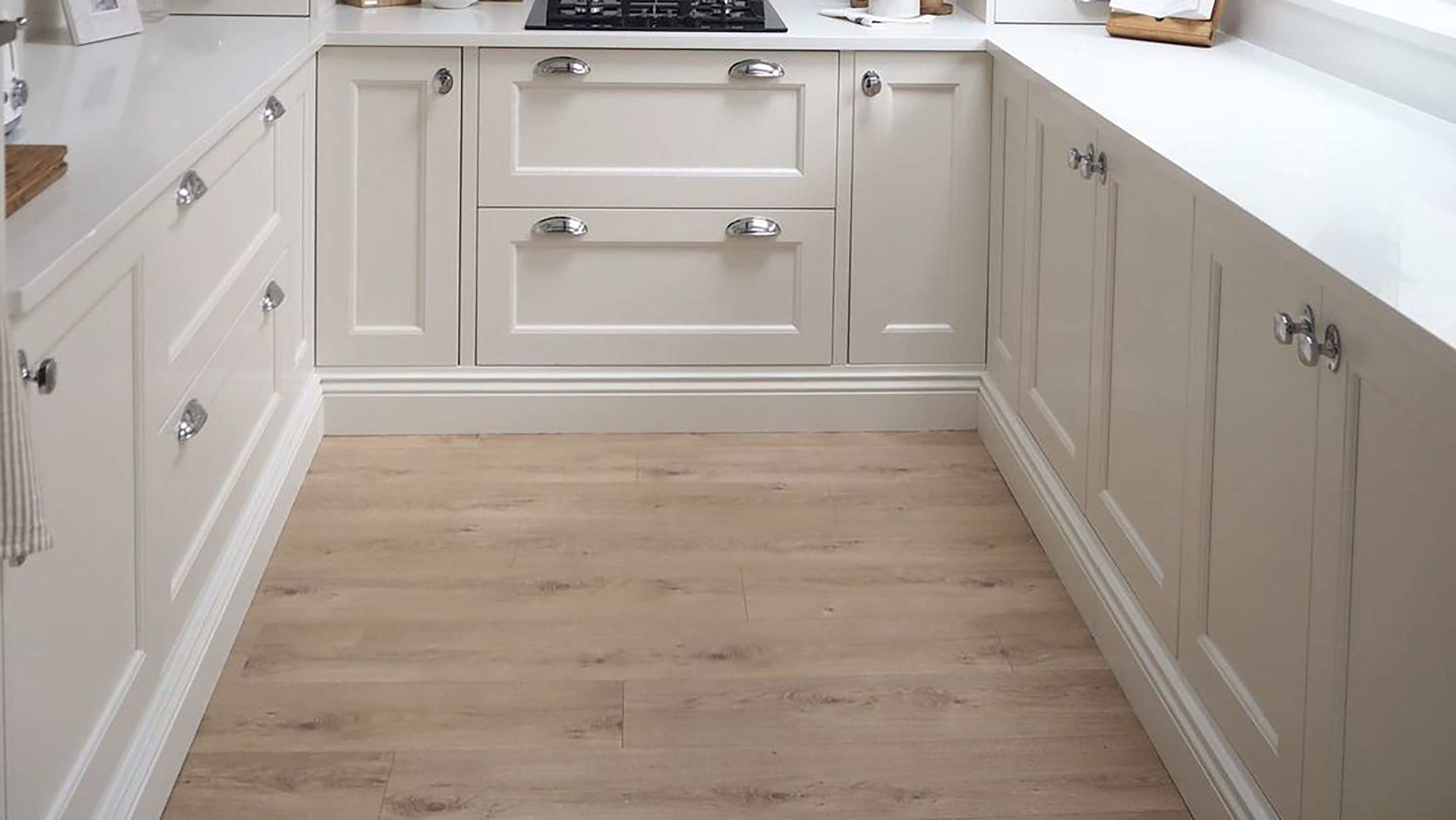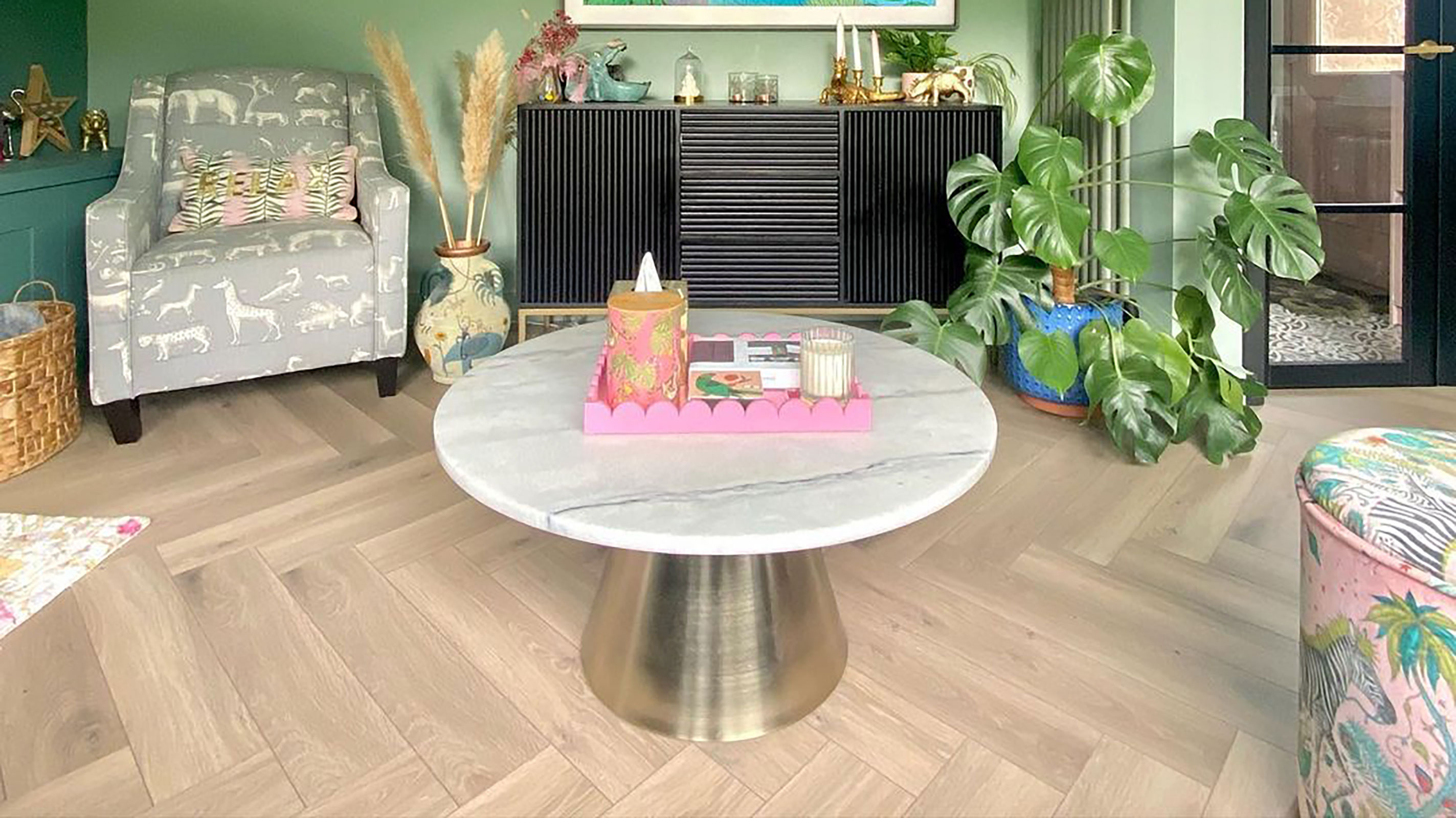Wondering which way to lay laminate flooring? Here's what the experts say
Confused over which way to lay laminate flooring? Fear not, we have spoken to experts in the field to discover the best way of installing this popular type of floor covering

Which way to lay laminate flooring is right? This is a common question asked by those keen to tackle the job of installing their new floor on a DIY basis — something usually well within the capabilities of most homeowners.
When it comes to how to lay laminate flooring, while it is a relatively straightforward job, there are some key tips and tricks involved in achieving a flawless finish.
"It's a simple job once you get to grips with the floor system you've opted for (thankfully it's usually one of the easiest types of flooring to lay) and have the right tools, and learning how to do it yourself will save you lots of money in the long run by taking the DIY route," says Andy Stevens, an award-winning builder and speaker at the Homebuilding & Renovating Shows.
But even once you understand the installation process, there is often a sticking point — which direction is it best to lay it in?
Which way to lay laminate flooring: Is there a wrong way?
Although there is plenty of advice surrounding the right and wrong way to lay laminate flooring, it can still be difficult to know which way will work best for your home.
Some of this advice is based on which technique is easiest for whoever is laying the flooring, while other tips are more focused on the final appearance of the floor. We have spoken to a number of experts to get their opinion and hopefully clear things up so that you can proceed with the job with confidence.
One note of caution, do make sure you have the right tools for laminate flooring before you begin the job or all the thought you have put into getting its direction right will be wasted.

Why does it matter which way you lay laminate?
The direction in which you lay your laminate flooring needs to take into account a number of factors, such as the shape and size of the room it is being installed in, the positioning of windows and doors, and whether or not it is being laid in an open-plan space. Take the time to familiarise yourself with how to measure for laminate flooring before you begin the job of installation.
"Generally, it's recommended to run laminate flooring in the direction of the longest side of the room, as this should mean less cuts are required, especially in a long, narrow space," explains Andy Stephens.
While this obviously makes sense from a practical perspective, it is not always going to be the best option for an aesthetic point of view.
"It’s personal preference in which direction you choose to lay your laminate," says Inga Morris-Blincoe, general manager at Lifestyle Floors. "Generally it is laid parallel to the longest wall of the room — unless it needs to match up with flooring in an adjacent room."
If you are laying the flooring in an open-plan space or throughout a series of connecting rooms, it makes sense to keep the laying direction consistent.
"Really there's no rule for which way flooring should be laid," reassures Andy Stevens. "The only thing is that you may be used to seeing flooring boards laid along the longest length of the room, so doing the opposite may look slightly strange at first, but in reality, it shouldn't be too much of an issue to choose which way you want the flooring to be laid."

How do you lay laminate in a square room?
While it is all well and good going with the idea that laminate flooring should, generally, be laid running in the same direction as the longest wall, what should you do in a square room?
"In a square room, a good tip is to lay the boards in the direction of incoming light.” advises Inga Morris-Blincoe.
It is a really good idea to take windows and natural light into account in general when it comes to laying laminate flooring, no matter what shape your room is.
Aim to align your laminate boards so that they run parallel to main light source or window. This should not only make your room appear bigger than it is, but the details and grain of the boards will also be enhanced by fitting them in this way.
Before getting started, make sure you know how to cut laminate flooring so that you don't end up with any wasted materials.

What other tips are there to get laminate flooring right?
Not properly considering the best direction to lay laminate is one of the most common mistakes when laying laminate flooring, but there are other points to watch out for too for the best final finish, including:
- Not allowing the laminate to acclimatise: "While it can be tempting to fit your new floor as soon as it is delivered, its essential to wait for 48 hours to let the materials acclimatise to the new environment," says Craig Smith, merchandising manager at Flooring Superstore. "Laminate can expand and contract in different temperatures. Chances are your flooring has been stored in a cold warehouse, so waiting for a couple of days before laying will pay dividends as there’s less risk of gaps and cracks appearing in your freshly laid floor."
- Laying laminate on an uneven base: "As with any new floor, laminate needs a smooth, level surface that is clean, dry and clear of any debris to ensure its longevity," says Craig Smith. "As well as removing old flooring, repair work may be required to ensure as even a surface as possible."
- Skipping underlay: "Use underlay — many people view this as an unnecessary additional cost, but this will add extra comfort underfoot, soundproofing and even added heat insulation which is more important now than ever before,” says Craig.
- Failing to leave an expansion gap: "Laminate flooring must have an expansion gap around the perimeter of the room and any fixed objects, such columns or fireplace hearths," says Marcus Ashburn, technical director at The Wood Flooring Co.
"Neglecting to leave enough of an expansion gap can lead to buckling or cupping of the flooring."
Get the Homebuilding & Renovating Newsletter
Bring your dream home to life with expert advice, how to guides and design inspiration. Sign up for our newsletter and get two free tickets to a Homebuilding & Renovating Show near you.
Natasha was Homebuilding & Renovating’s Associate Content Editor and was a member of the Homebuilding team for over two decades. In her role on Homebuilding & Renovating she imparted her knowledge on a wide range of renovation topics, from window condensation to renovating bathrooms, to removing walls and adding an extension. She continues to write for Homebuilding on these topics, and more. An experienced journalist and renovation expert, she also writes for a number of other homes titles, including Homes & Gardens and Ideal Homes. Over the years Natasha has renovated and carried out a side extension to a Victorian terrace. She is currently living in the rural Edwardian cottage she renovated and extended on a largely DIY basis, living on site for the duration of the project.

